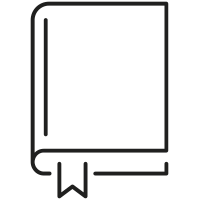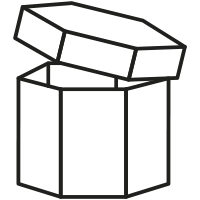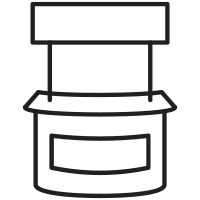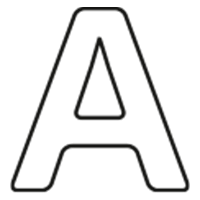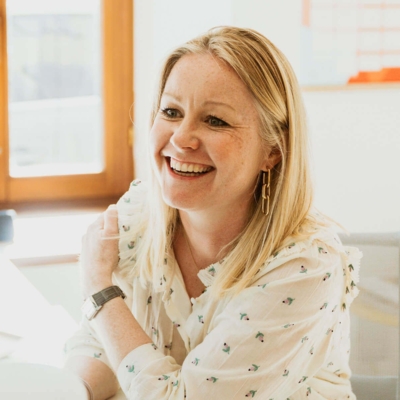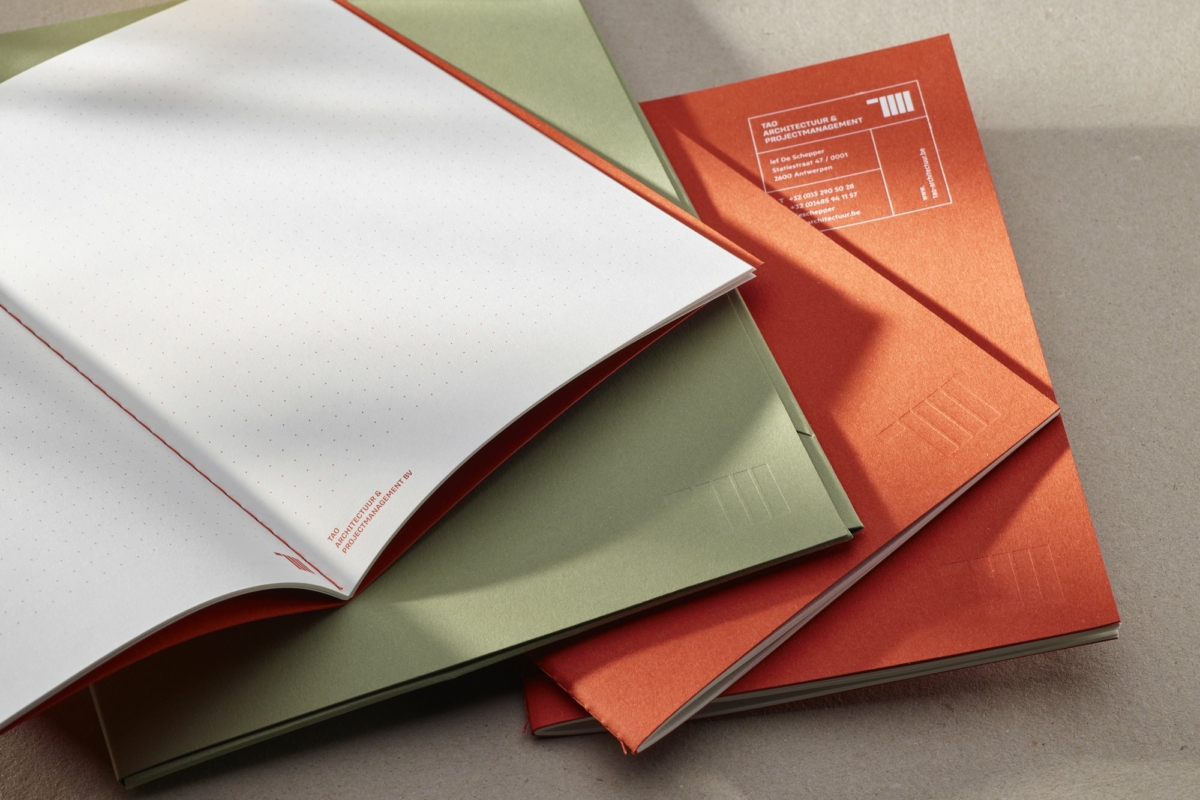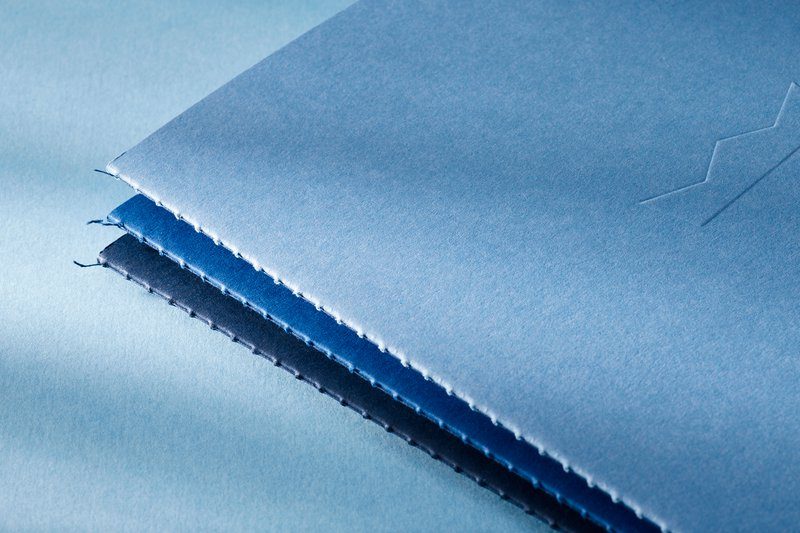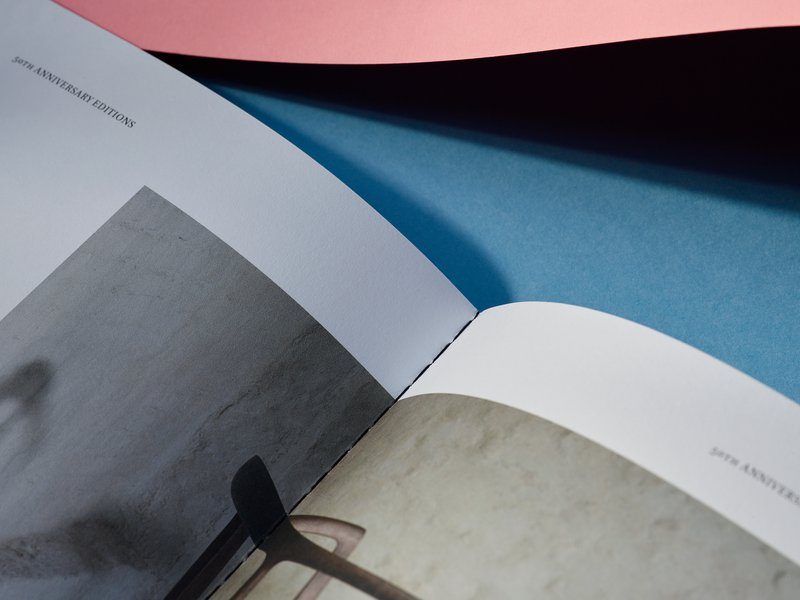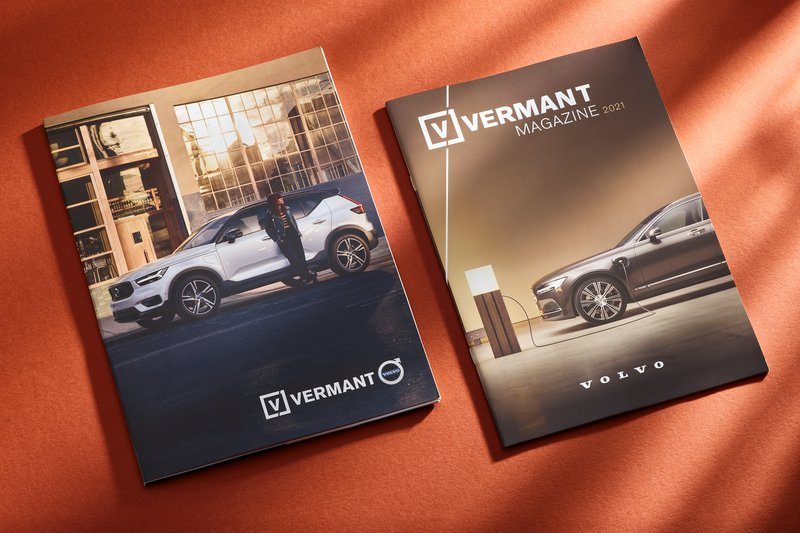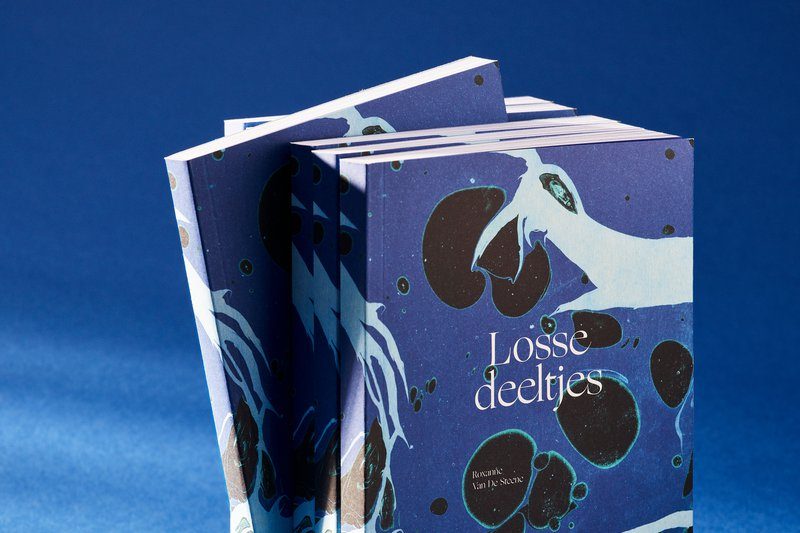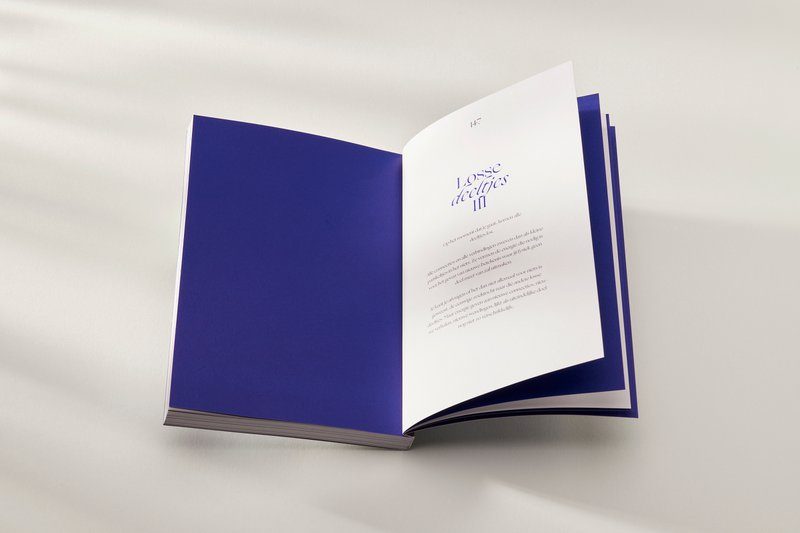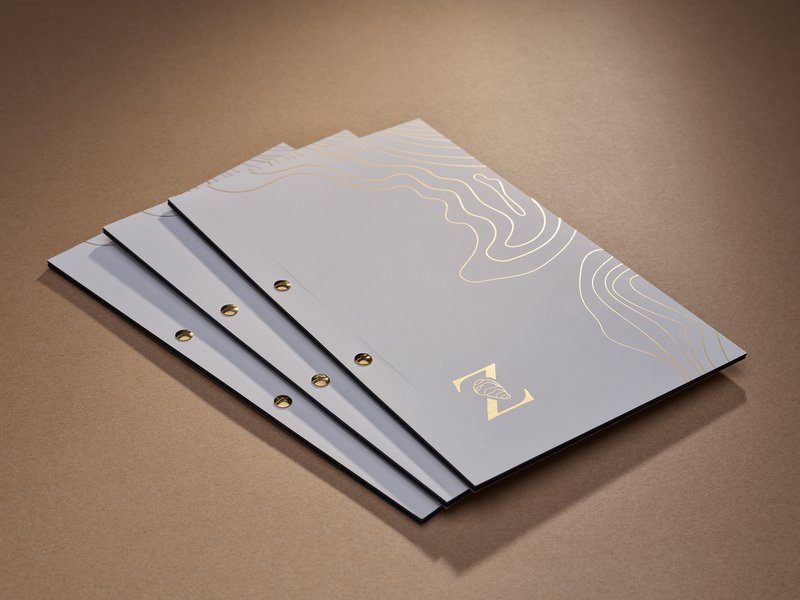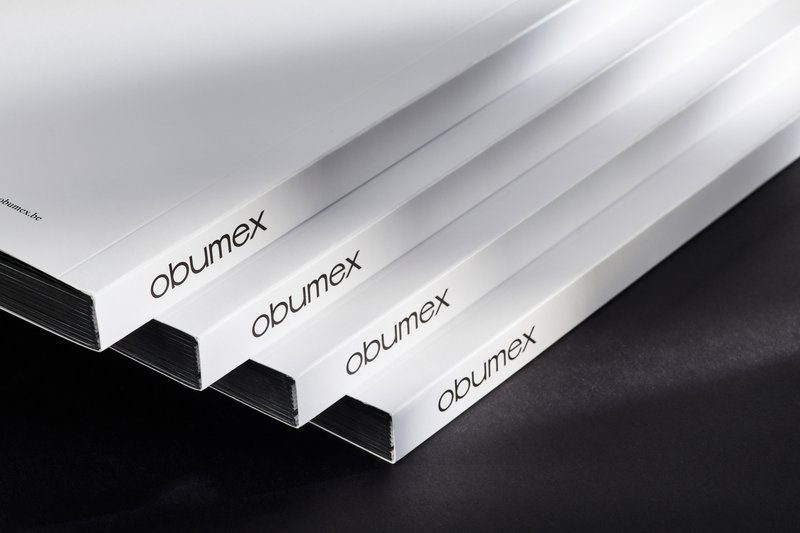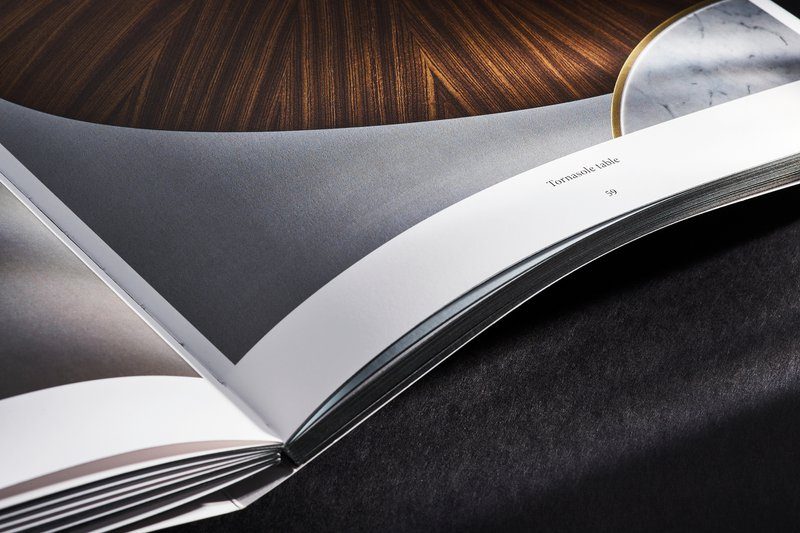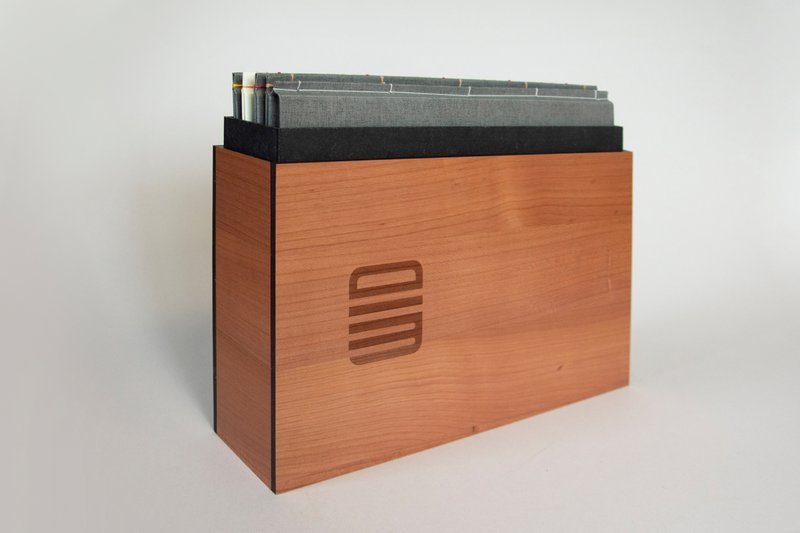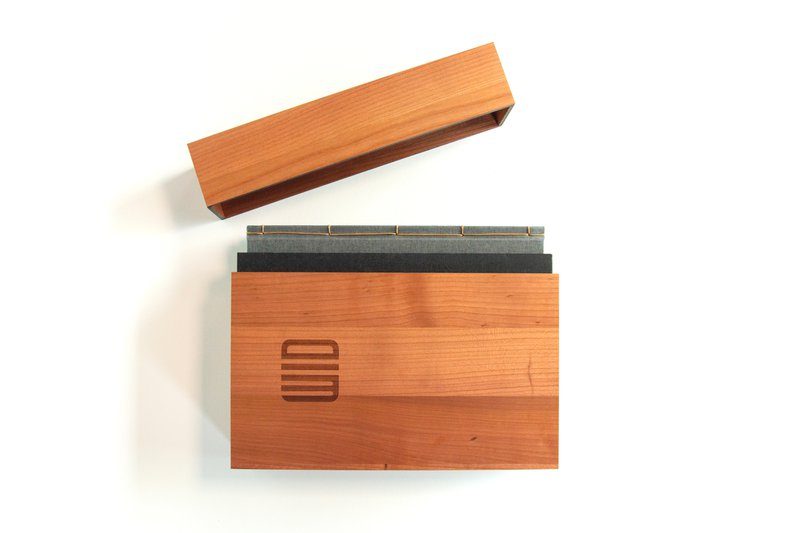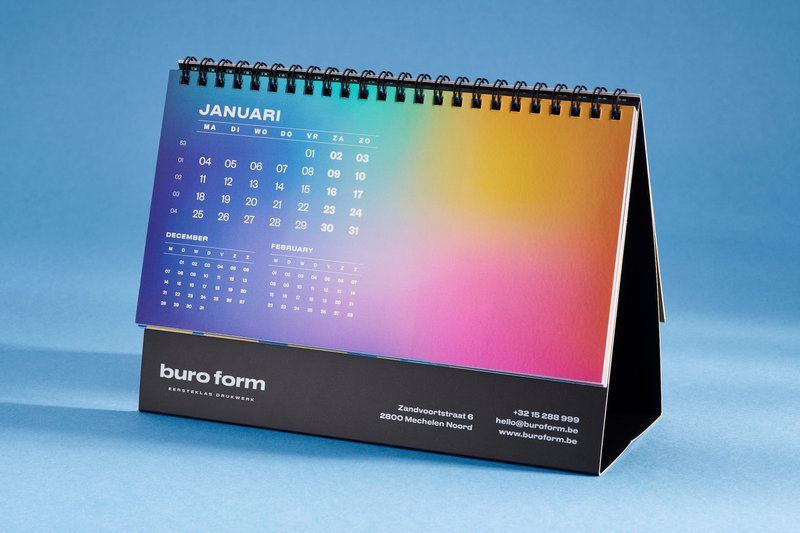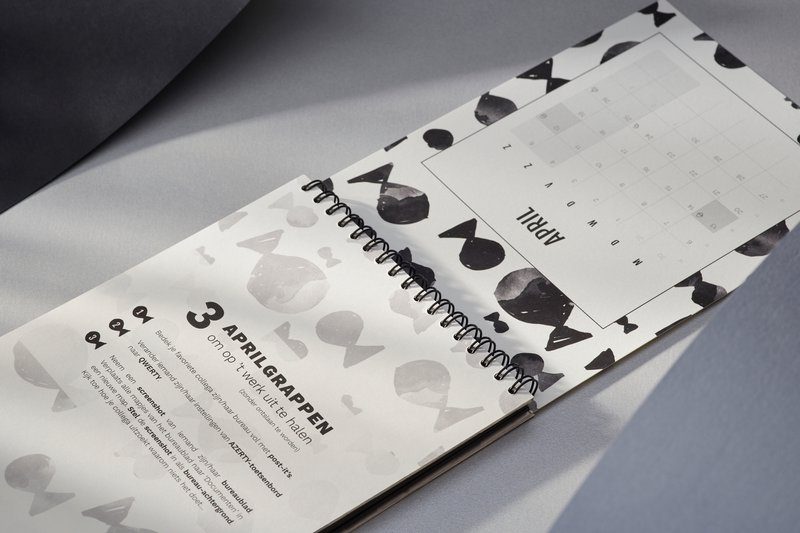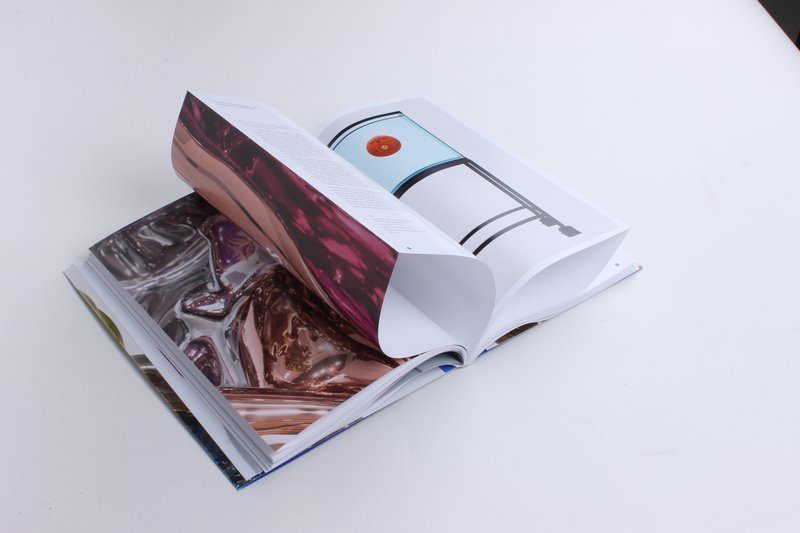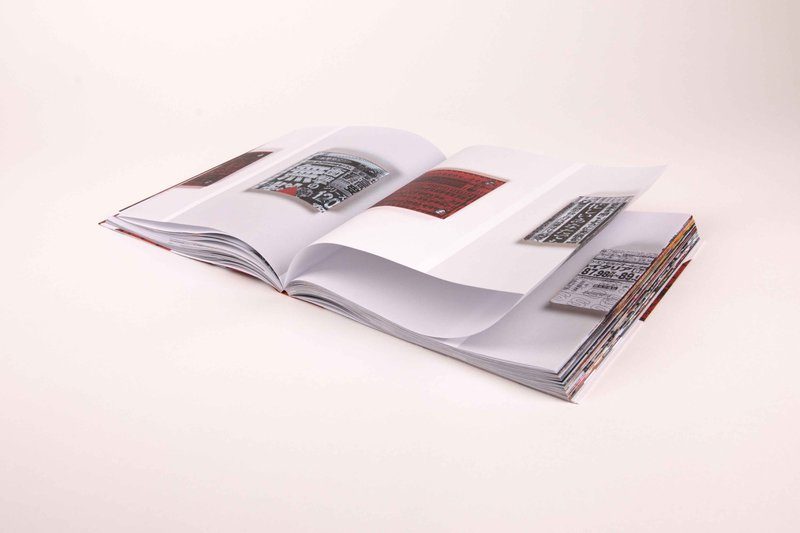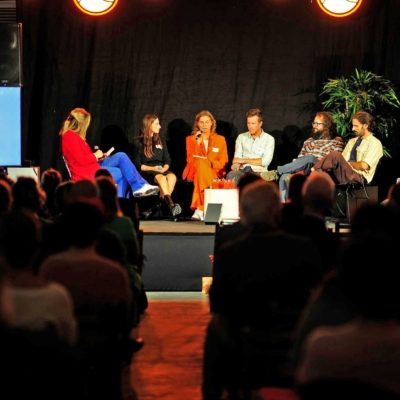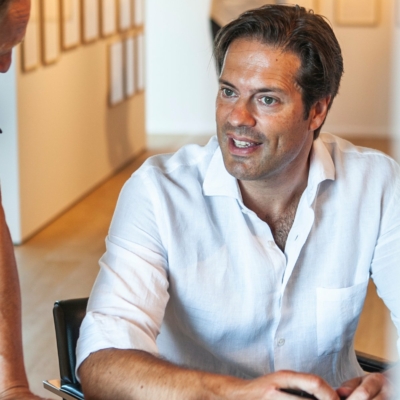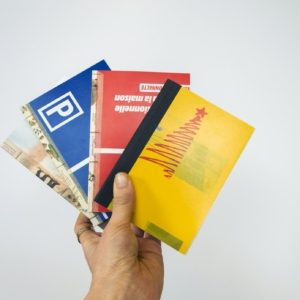Binding methods, the backbone of any book
Want to get a book printed? Then you have a lot of decisions to make. About the paper, the cover, the type of cover, special printing techniques, and so on. But also: about the binding method, perhaps the most difficult choice of all. One you’d rather not make on your own? No problem, we’re here for that! 👇
Singerstitch
A singersteek is used mainly for thin books with soft covers. The binding is popular with artists who want to create an art book, or for high-end presentation brochures in the real estate industry, for example. You have a choice of two types: in the back of the printing and the flattening stitch. With a singerstitch in the back , we put the quires together and sew in the back. In flattening , we lay the sheets on top of each other and sew the entire stack of paper.
Whichever technique you go for, the nice thing is that you can choose from different colors of yarn each time to add some extra kick to your creation.
Folding and stapling
A method we use mainly for books of up to 80 pages. Here you can choose standard staples or so-called eye staples, where the document is placed in a simple ring binder. The smallest size you can staple is A6 (105 x 148 mm).
Yarnless binding
Yarnless binding is the ideal technique for brochures and magazines. As the name implies, no yarn is used, but glue is used.
Yarnless PUR
Are you going for a perfect bound brochure or catalog and is longevity of great importance? Then you can choose PUR glue. With this ultra-strong adhesive, your book will last a lifetime.
Yarn sewn binding
This method of binding is the absolute cream of the crop and very popular for high-end printing such as art books or coffee table books, and for good reason . Much has to do with the durable nature of the binding that remarkably increases the longevity of your book. You should keep in mind that this binding method is a time-consuming job and therefore quite expensive.
Open back binding
This is a very special edition, as it combines a sewn-glued binding with a glued spine.
In fact, the spine of the sewn book blocks is left exposed and finished with lightly pigmented, transparent or colored hot melt adhesive. The binding thread thus remains subtly visible, which can make for very surprising effects. A good example is text that emerges in certain parts of the spine of sections. In this case, we glue the spine with transparent or lightly pigmented glue, or the book block is even completely colored.

Block adhesives
In this binding, we glue a number of sheets of paper to board. You see block glues most often with memo and note pads, but other applications such as tear-off calendars are also perfect for this.
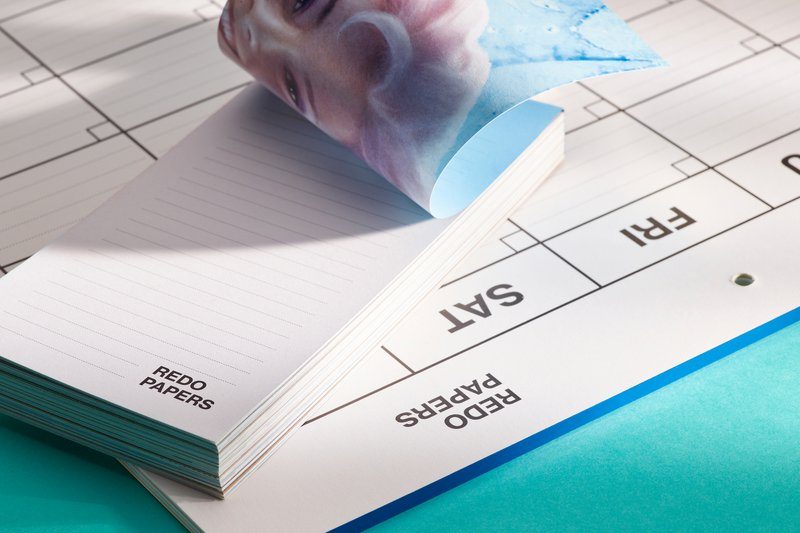
Binding with book screws
The advantage of book screws is that they do not form a permanent joint. So you can easily have the binding renewed. Moreover, the binding can always expand them with various accessories such as extensions, book screw loops, spacers, covers and rivets. Very popular for menu cards!
Swiss binding
This binding departs from a threadless or sewn book block. Those book blocks are wrapped in linen and then glued to the third page of the cover. For a yarn-stitched version, the linen can be omitted as in the photo below.
Japanese binding
A Japanese binding is an ancient traditional technique, formed using four or five holes, depending on the size of your book. No gluing or folding is involved, creating a beautiful, handmade book.
Otabind
Otabind is a finishing technique that makes your book last extra long and stay open nicely while reading. In this technique, the cover of the book is not glued on the spine of the book block, but on the first and last page of the book block. You can recognize it by the spine that hollows nicely when you open the book. The major advantage of Otabind is the flexible cold glue used. The combination of the loose spine and that cold glue allow the book block to open up nice and flat.

Wire-o binding
Wire-o binding is a convenient and sturdy binding method, ideal for books with many pages such as catalogs and teaching materials. We also use it regularly with calendars. It is important to note, however, that your printed matter can only have a maximum thickness of 28 mm. By the way, do you like a pop of color? With shades like black, white, copper, gold and metallic, you can give a fun effect to your book.
Japanese brocaded
In this binding method, pages are glued into the spine, but then not post-cut at the head. As a result, quires remain closed. So you can’t put important text on the closed sections, but you can print them to give your book an artistic look.
Would you like additional personal advice from our experts? Then reserve a cup of coffee with Kelly or Sarah or just pop in!


